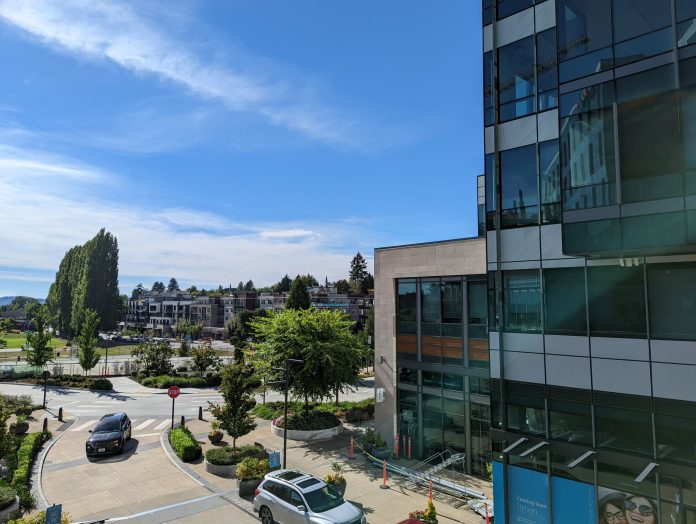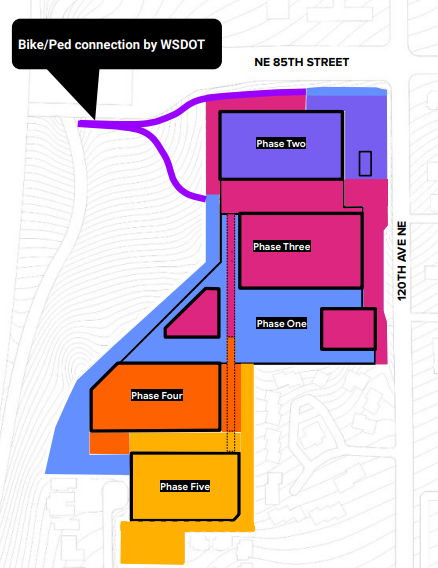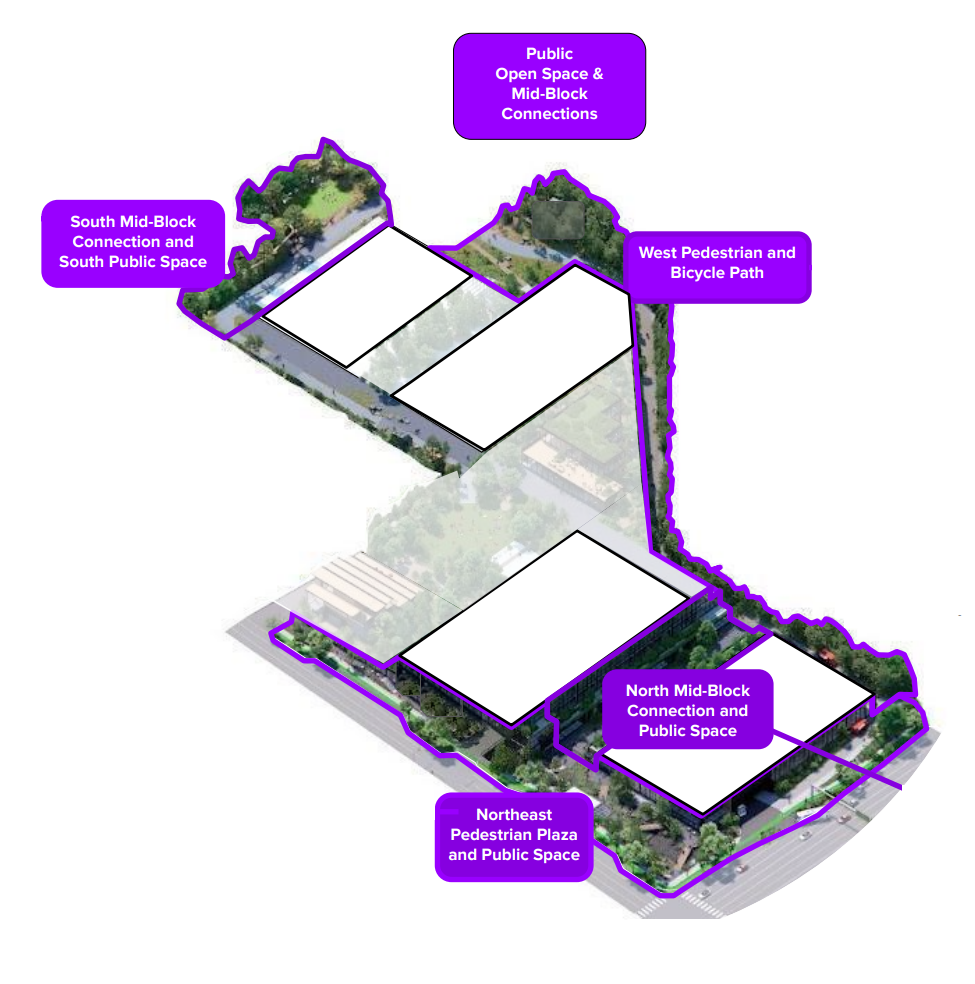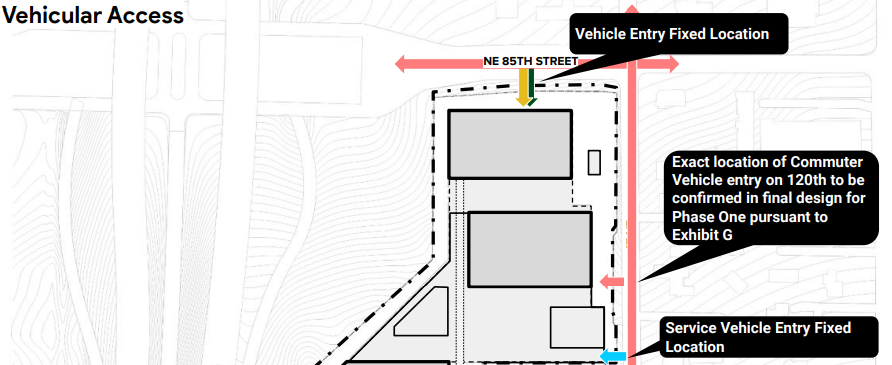Update: On January 20th, 2023, the City of Kirkland announced that Google will not be proceeding with the sale of the Lee Johnson site and proposed development plan.
The tech giant’s development concept is rapidly growing Kirkland’s most ambitious proposal
To close out The Urbanist’s series on Kirkland’s recent and ongoing developments, we saved the biggest development planned for the city for last. So far, with articles on Totem Lake, Downtown Kirkland and Rose Hill, and the smaller development nodes, we’ve documented over 8,100 housing units, over 2 million square feet of commercial and institution space, and over 15,000 parking stalls that have been constructed since 2019, are under construction, or in permitting/planning. Google’s Kirkland Urban campus has already been a major component of this parking and commercial square feet, but if developed to its greatest extent, Google’s next campus project is set to increase the amount of new commercial space in Kirkland by over 60%.
A map of all the developments, planned and constructed, in Kirkland since 2019. (Map by Author)
Within a few minutes of walking from the future NE 85th Street Stride bus rapid transit (BRT) station, Google is planning its third Kirkland campus. According to a pre-submittal meeting application from September 13th, the tech giant is planning approximately 1.25 million square feet of commercial space. At around 11845 NE 85th Street, an ensemble of Lee Johnson Auto company parcels will form the roughly 9.5-acre site that Google plans to buy and develop.
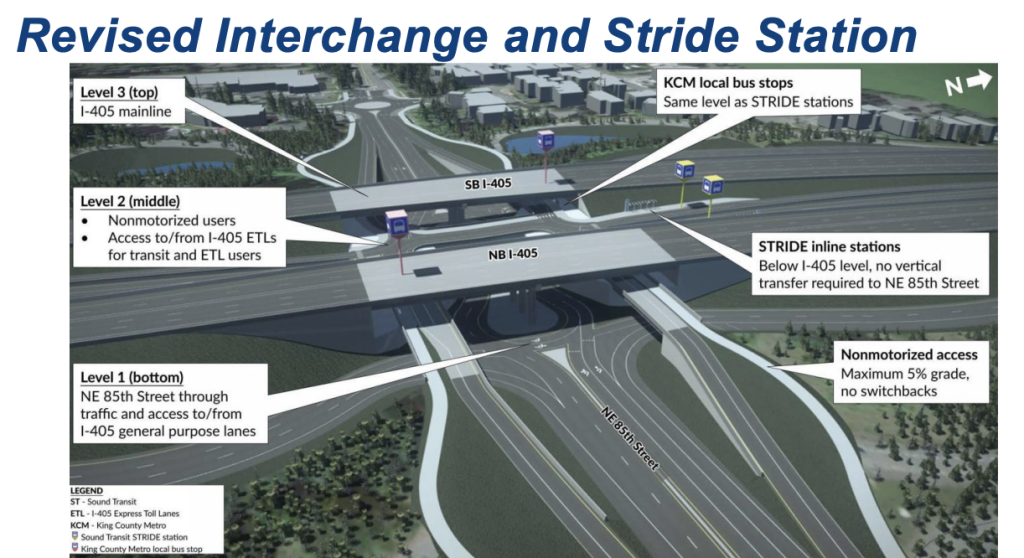
Currently, a development agreement between the City of Kirkland and Google is being hammered out to ensure the goals of the station area plan will be met in Google’s future development and gives Google certainty on the development standards that they will be operating around.
Reviewing the campus plan
On July 11th, Kirkland and Google representatives held a public hearing on the development agreement. In the meeting, Google presented a detailed and early concept for the new campus. There will be four office towers with ground floor retail, active plazas and open space, and a bike and pedestrian trail. It would support 7,000 employees, 6,000 of which would be Googlers. The plan is for five phases with estimated dates of completion between 2027 and 2032.
The current concept has phase one constructing a podium with a shared garage for the future northern towers. Phase two constructs the northernmost tower and its concept neighboring open space. Phase three constructs the concept tower just south of the phase two tower and the concept green space between those two towers. Phase four and five complete the campus with one more tower each and the final open spaces. Each phase improves the pedestrian and bike infrastructure of the surrounding area.
A major theme Google is incorporating into their planning is sustainability. One way this is currently playing out is the plan for the towers to be made out of Commercial Mass Timber (CMT), the most sustainable material currently available to Google. This material could change if Google finds a more sustainable alternative. In the meantime, this choice locks in a height limit of 180 feet, as it’s the current height limit for mass timber buildings in Washington State.
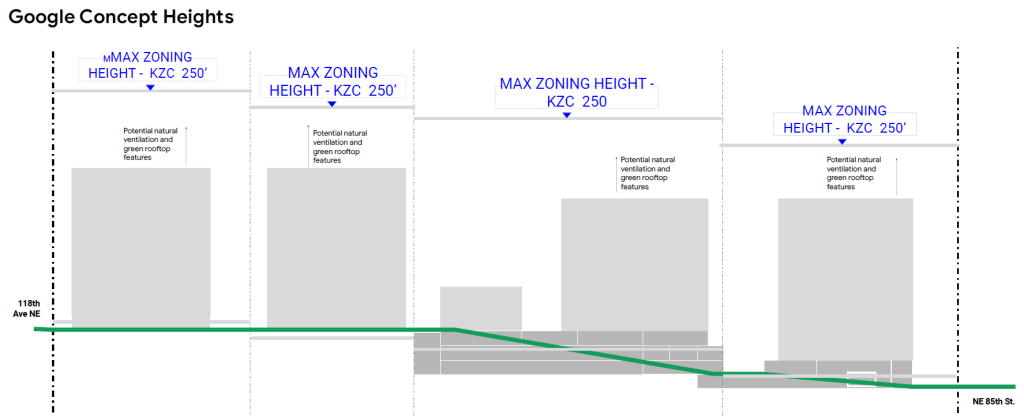
Four main open spaces are envisioned in this early concept. Supporting the sustainability theme, their purpose would be for greening, activation with retail and gathering spaces, sports facilities, safe connections for bikes and pedestrians, and emergency vehicle access. In their presentation, Google representatives mentioned the desire to work with the Washington State Department of Transportation (WSDOT) to connect their concept spaces with WSDOT land that’s not being paved over for the highway interchange.
Scrutinizing the concept and development agreement
The 180-foot height limit for mass timber buildings suggests that Google won’t be building to the 250-foot height limit passed in the NE 85th Street Station Area Plan, potentially leaving a fair amount of development capacity on the table. As they would have the extra 70 feet of height to play with, Google did mention the consideration of natural ventilation, solar panels, and green rooftop features. Perhaps a large vertical-axis wind turbine could be considered too. .
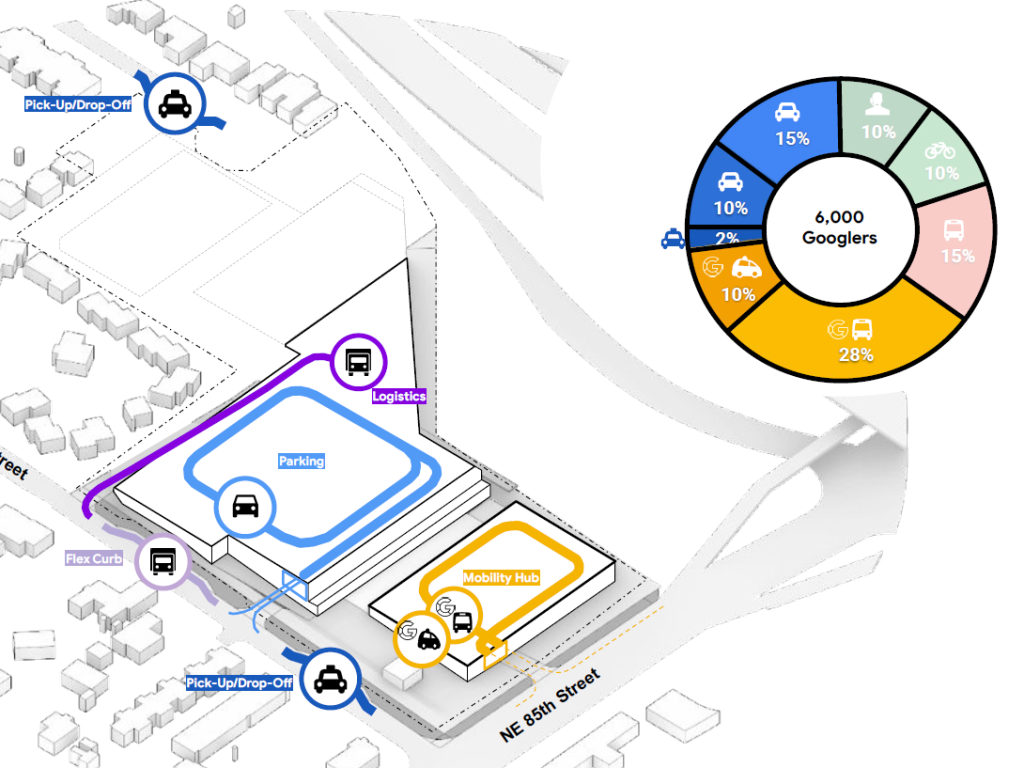
As a part of their sustainability theme, Google is aiming to contain private vehicle use of its employees to just 25% of the 6,000 potential Googlers. Transportation management is where wrinkles appear in Google’s plans, the 25% doesn’t include users of all the open spaces, customers and employees for the retail space, and loading and other needs for logistics. Plus, 25% of 6,000 potential employees is a lot, similar projects in Bellevue have well over 1,700 parking stalls.
Per the development agreement, the first two towers must provide required parking per the city’s zoning code. The code adopted when the station area plan passed requires two stalls per 1,000 square feet of commercial use. If Kirkland agrees to reduced parking requirements for the rest of the phases, then the ratio drops to one stall per 1,000 square feet of commercial use. If the first two towers are half of the planned 1.25 million square feet, then at least 1,875 parking stalls would be required for the whole project. A maximum of 2,500 parking stalls could be required for this project if the city deems it appropriate.
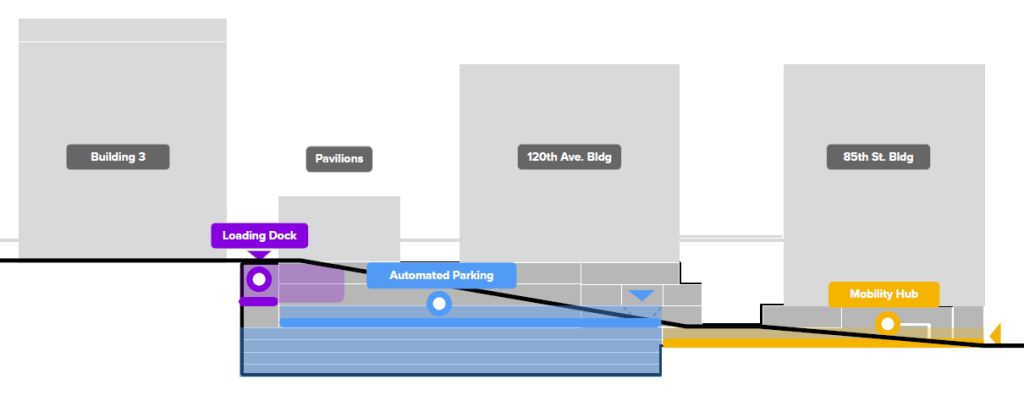
Additionally, a curb cut is proposed to remain on NE 85th Street. NE 85th Street will be the main pedestrian, bike, and transit portal to the BRT station along I-405 — it’s even clearly outlined as a major thoroughfare in the NE 85th Street Station Area Plan. Google seems to want this curb cut for its mobility hub, which should theoretically restrict access to rideshare and Google’s buses for this curb cut. Emergency access would also use the curb cut.
An additional vehicle access point on NE 85th Street, especially one this close to the BRT station, runs counter to the transportation goals of the station area plan. It would add another point of conflict that endangers all using the NE 85th Street right-of-way. Pedestrians and bicyclists would be the most impacted. This curb cut should be consolidated with the two proposed curb cuts on 120th Avenue NE.
Putting it all together
If Google builds to the current planned maximum of 1.25 million square feet of commercial space for their third campus, this bumps up our documented figures to 8,100 housing units, over 3.25 million square feet of commercial and institution space, and over 17,000 parking stalls that have been constructed since 2019, are under construction, or in permitting/planning in the City of Kirkland. A fair amount of that housing will be affordable due to fully affordable projects and the 10% inclusionary zoning required of developments in Kirkland, which puts the planned and constructed affordable housing units to 1,500. Plus, Google currently has a $12.46 million contribution to affordable housing in their draft development agreement for campus three.
Google’s third Kirkland campus is the first project to take advantage of the June upzone via the NE 85th Street Station Area Plan. Expect more developments to trickle and then flood in with the new development capacity, phase two of the subarea plan, and Comprehensive Plan update implementation in the next few years. Kirkland, like the rest of the region, is set to grow quickly. How this growth impacts Kirkland residents’ safety, sustainability, and quality of life will be at the whim of the city’s plans and implementation thereof.
Shaun Kuo is a junior editor at The Urbanist and a recent graduate from the UW Tacoma Master of Arts in Community Planning. He is a urban planner at the Puget Sound Regional Council and a Seattle native that has lived in Wallingford, Northgate, and Lake Forest Park. He enjoys exploring the city by bus and foot.


